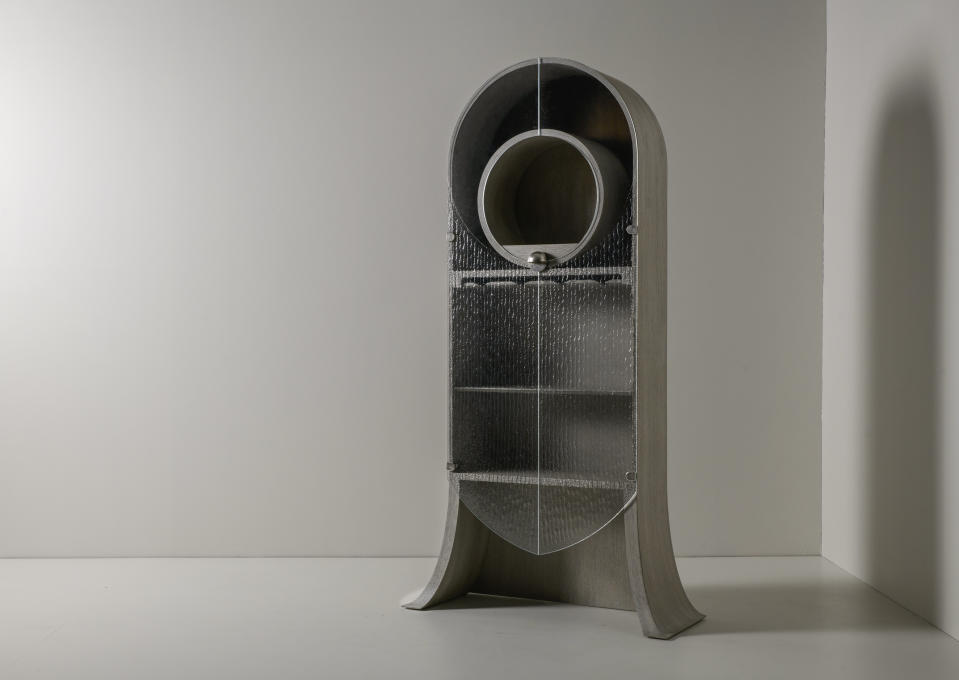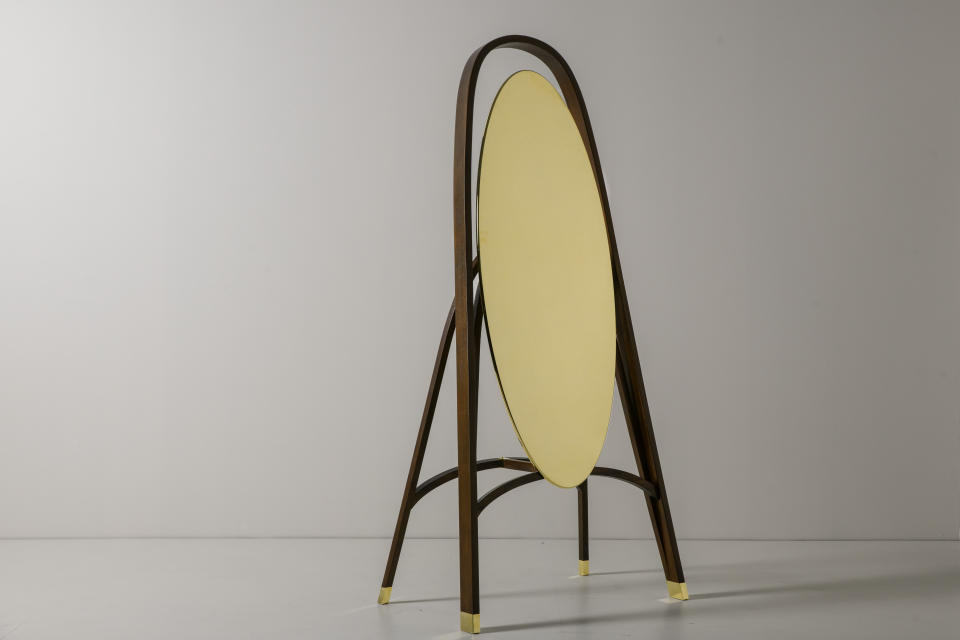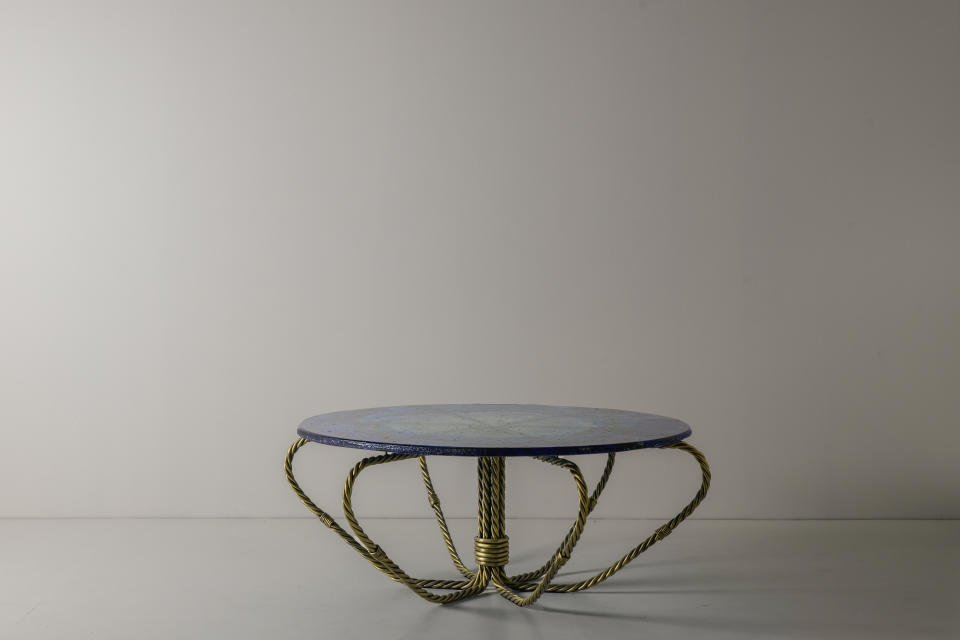How an Amish Craftsman Turned Masterpieces From The Met Into Gallery-worthy Furniture

Ernest Hershberger has never felt spiritually connected to a piece of furniture. A devout member of the Amish church and chief executive officer of high-end furnishings maker Abner Henry, Hershberger saw the pieces he designed and handcrafted as merely the end product of his hard work.
But that changed three years ago when he got a call from The Metropolitan Museum of Art in New York. The Met wanted to expand its home goods licenses into furniture — the museum has partnerships with other brands such as luxury bedding maker Ann Gish — and it needed a collaborator that could deliver the level of quality befitting the prestige of the venerable institution.
More from WWD
Met Costume Institute Exhibits 'In America: A Lexicon of Fashion' for 75th Anniversary
A Look at MET's "Camp: Notes on Fashion" Exhibit Presented in Milan
“Home decor was one of our high-priority categories, and we wanted to come in at the highest possible place, working with artists in the category,” said Josh Romm, The Met’s head of licensing and partnerships.
Though not a high-profile name in the furniture industry, Abner Henry has a long-standing reputation for making pieces that marry traditional Amish craftsmanship with a surprisingly modern, design-forward aesthetic. That dichotomy appealed to Romm, so he invited Hershberger and his team to peruse the museum’s collections for inspirational pieces.
“We didn’t really pigeonhole in any given collection or time period,” Romm said. “His journey started with objects ranging from our Egyptian collection to Impressionists. Early in that arc, he realized he had to do something more than just the application of beautiful imagery onto a product. He knew he had to be more creative, more inspired and more of a visionary with respect to where to go with the Met assets.”
Hershberger, who had never been to New York City or The Met prior to this collaboration, knew he had to find a formula for paring down the nearly 5,000 works he saw into something usable.
“You do the research and ask yourself, ‘What do we think is relevant? What would resonate?’” he said. “We want something that’s timeless, that’s iconic, that’s generational, especially from a limited-edition type of concept, and it also needs to resonate with the end consumer.”
Hershberger and his team settled on seven works for interpretation. “Sunflowers” by Vincent Van Gogh gets reimagined in the glass-top Verlang cocktail table, with a base of bent metal segments curling into the center like the petals of a flower. Inside, a textured brass grind — hand brushed onto the white-hot metal — recalls the texture of Van Gogh’s work.
The process to create the effect confounded Hershberger and his team, who struggled with the painstaking work to get it right. But at the height of his frustration, divine intervention struck, and suddenly the process became clear.
“In normal furniture design, you follow profiles of scale and style, and it always works,” he said. “When we came to this, drawing inspiration from a painting, the normal process didn’t work. But one day walking through the shop, all of a sudden Scripture popped into my brain, and it made sense. Biblically, we talk about going through the fire to improve ourselves, and that helped me better understand how to complete this process.”
Hershberger felt similar spiritual connections to other pieces in the line, such as the Pirouette console table, which reflects the delicate folds of a ballerina’s tutu as depicted in “The Dance Class” by Edgar Degas. Softly undulating waves of wood are finished with a gossamer marble and braced with hand-forged brass legs that mimic the bent arms of ballerinas in the painting. A 126-inch cantilever glass top extends far beyond the base, balancing the silhouette.
Other pieces in the collection include the Ventana standing mirror in mahogany and polished brass, inspired by Velázquez’ “Juan de Pareja,” and Duet nesting tables with a subtle dusting of 24-karat gold and platinum in their wood grain, inspired by Edouard Manet’s “The Monet Family in Their Garden at Argenteuil.” The Severine cocktail table takes its vision from “Circus Sideshow” by Georges Seurat with oxidized and fumed blocks of oak creating a pointillism effect, while the hand-patterned glass of the Serena bar cabinet captures the sinuous dress of Serena Pulitzer Lederer in a portrait by Gustav Klimt. And the Coralie cocktail table boasts intricately mixed glass tones to create an ocean-like effect reflective of Auguste Renoir’s “By the Seashore.”


The Abner Henry x The Met collection, which will be produced in a limited quantity of 70 per piece, ranges in price from $54,428 for the Verlang cocktail table to $144,200 for the Pirouette console. Romm said Abner Henry exceeded The Met’s expectations with their interpretations for this collection, and he sees the pieces being displayed as a form of art themselves in the home.

“If you look at the artwork side-by-side with the piece, the eventual consumer or the art fan really understands how this furniture grew out of the ideas and concepts of the originating art piece,” he said.
For Hershberger, who recently launched the collection in New York and at the High Point Market in High Point, North Carolina, the culmination of the three-year process to bring this line to life has brought him to a new place both spiritually and as an artisan. And he hopes that transcendence carries through to the buyers who bring the pieces into their homes.
“I didn’t know the people in New York — we’re just Amish Christians out in the country — but it has been so enlightening to meet other people from all over the world as we worked on this collection,” he said. “And while I don’t want to force my beliefs on others, I hope sharing the spiritual story behind each piece will offer a blessing to the homes they enter.”
Best of WWD

